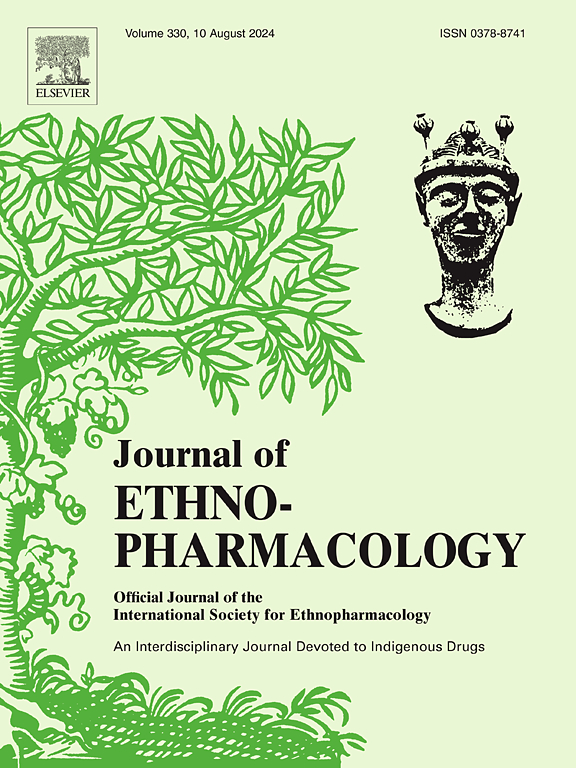Integrating metabolomics and network pharmacology to study the mechanism of Er-Xian decoction in improving intervertebral disc degeneration
IF 4.8
2区 医学
Q1 CHEMISTRY, MEDICINAL
引用次数: 0
Abstract
Ethnopharmacological relevance
Intervertebral disc degeneration (IDD) is the progressive deterioration of the structure and function of an intervertebral disc (IVD), which manifests as excessive catabolism of the IVD extracellular matrix, which may lead to the gradual loss of IVD proteoglycans and water, thus altering the IVD composition and eventually leading to degeneration. As a traditional Chinese medicine, Er-Xian decoction (EXD) can balance the body's yin and yang, tonify the liver and kidney, invigorate blood circulation, and prevent blood stasis. Pharmacological research has shown that EXD regulates antioxidant and endocrine metabolism, maintains immune balance, and improves microcirculation.
Aims of the study
To clarify the efficacy of EXD on treating IDD.
Materials and methods
Serum was collected from model IDD rabbits treated with EXD for metabolomics analysis, and its mechanism of action was predicted on the basis of the metabolomics and network pharmacology data. Nucleus pulposus cells (NPCs) were induced with IL-1β to build an in vitro IDD model, and EXD was administered along with an inhibitor. All groups of cells were subjected to CCK-8 assays, ELISA and flow cytometry, immunohistochemistry, Western blot, and immunofluorescence staining analyses to explore how EXD protects NPCs and the underlying mechanism.
Results
EXD reduced inflammatory processes, restored IVD height, and alleviated IDD in rabbits. Integrated metabolomics and network pharmacology analyses revealed that EXD exerts its therapeutic effects on IDD primarily via the mTOR and HIF-1 signalling pathways, and the active components of EXD, including anhydroicaritin, β-sitosterol, kaempferol, quercetin, and stigmasterol, bound strongly to pivotal targets within these pathways. Moreover, EXD reduced the inflammatory factor levels, inhibited NPC apoptosis, and upregulated the key proteins p-mTOR, HIF-1α, and p-AKT. Conversely, the HIF-1 inhibitor BAY872243 increased the inflammatory factor levels and led to NPC deterioration.
Conclusion
EXD regulates disc cell metabolism and inflammatory responses by modulating the mTOR and HIF-1 signalling pathways, thereby slowing or reversing IDD.

求助全文
约1分钟内获得全文
求助全文
来源期刊

Journal of ethnopharmacology
医学-全科医学与补充医学
CiteScore
10.30
自引率
5.60%
发文量
967
审稿时长
77 days
期刊介绍:
The Journal of Ethnopharmacology is dedicated to the exchange of information and understandings about people''s use of plants, fungi, animals, microorganisms and minerals and their biological and pharmacological effects based on the principles established through international conventions. Early people confronted with illness and disease, discovered a wealth of useful therapeutic agents in the plant and animal kingdoms. The empirical knowledge of these medicinal substances and their toxic potential was passed on by oral tradition and sometimes recorded in herbals and other texts on materia medica. Many valuable drugs of today (e.g., atropine, ephedrine, tubocurarine, digoxin, reserpine) came into use through the study of indigenous remedies. Chemists continue to use plant-derived drugs (e.g., morphine, taxol, physostigmine, quinidine, emetine) as prototypes in their attempts to develop more effective and less toxic medicinals.
 求助内容:
求助内容: 应助结果提醒方式:
应助结果提醒方式:


